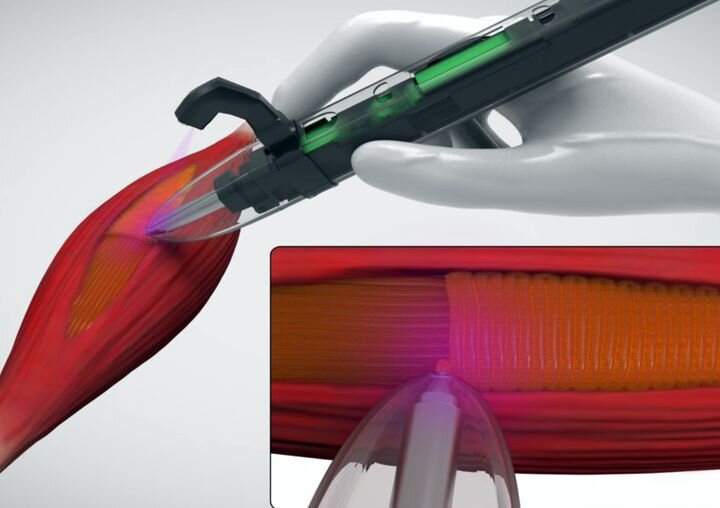![Handheld bioprinter concept [Source: ACS]](https://fabbaloo.com/wp-content/uploads/2020/05/image-asset_img_5eb05064beabd.jpg)
Researchers from the University of Connecticut have developed an unusual bioprinter that can allow patients to successfully recover lost muscle tissue.
Loss of muscle is definitely not a good thing. In many cases, the muscles do not grow back in the same way they were originally configured, and the patient may suffer a permanent functional loss. The researchers sought a method to allow proper regrowth of this tissue.
They believed that a deposition of an appropriate scaffold structure would allow muscular cells to gradually grow more easily, and the shape of the structure could thus lead to a more proper muscle recovery.
However, it turns out there are plenty of issues in doing this, as simple as it sounds. One of the issues is having both a material that is suitable for bioprinting scaffolds, and also one that adheres to the muscle surface.
Handheld Bioprinter
The researchers eventually identified a collagen-like material that had these characteristics. The material could be extruded in gel form, yet be quickly solidified by an application of UV light, like a photopolymer.
The researchers built a handheld device that did just that: extrude the collagen-like material as well as muscle cells, and also equipped with a UV light source. By moving the handheld bioprinter, medical technicians were able to successfully deposit biomaterial scaffolds of the desired form into damaged muscle tissue.
In a way, this device is reminiscent of 3D pens, which are polymer extruders used for example by artists for sculptures and 3D printer operators for repair purposes. However, in this case the device is used to repair living muscles that have suffered damage.
Automated Bioprinter
Truthfully, this handheld bioprinter might not be classified as a 3D printer, as it is manually operated by a skilled technician. However, one might look at this development as the first stage of a future machine that could be more fully automated.
Such a device would have to be able to “see” the 3D structure of the affected muscle area and develop its own tool path for deposition. So long as the patient remained motionless, it’s possible something like this could be developed in the future.
But that wouldn’t be possible without first developing the extrusion technology, which seems to have been achieved with this research.
Via ACS

